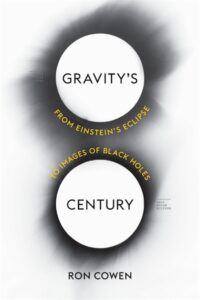29 May 1919 – teams of scientists in Brazil and on the west coast of Africa observed and documented the positions of stars during a total solar eclipse, the results of which when analyzed confirmed Einstein’s recently published theory of general relativity.
11 April 2017, a different team of scientists (those of the first team having long since retired, both professionally and existentially) completed five days of networked radio-telescopic observations of the event horizon of a black hole.
What do these two dates have in common? Read on…

